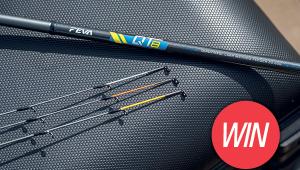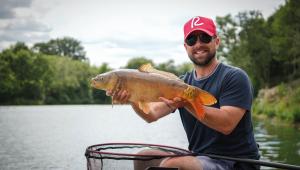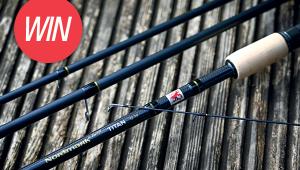Be A Big Lake Beater
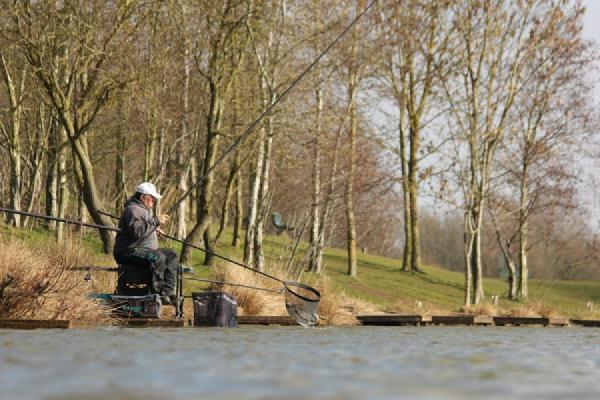
We caught up with Wayne Swinscoe at Meadowlands Fishery for a lesson in catching winning weights of silvers on deep venues.
MF: What’s the difference between tackling large and deep venues like this one here at Meadowlands, compared to your average 5ft to 6ft deep commercial pond?
WAYNE SWINSCOE: I think the main thing is the fact that you are much more exposed to the elements on venues like this. Larger bodies of water are affected much more by the wind. That means they can really tow at times. Being anything from eight to 15 feet deep also means you have to be much more positive and robust in your approach.
On shallower lakes, you can use much lighter pole floats so you can lay them in nicely. On a lake like this one, you have to be much more positive and lower heavier floats in to get a bait down to the catching area. The extra depth and undertow also mean the way you feed and where you choose to fish plays a crucial part.
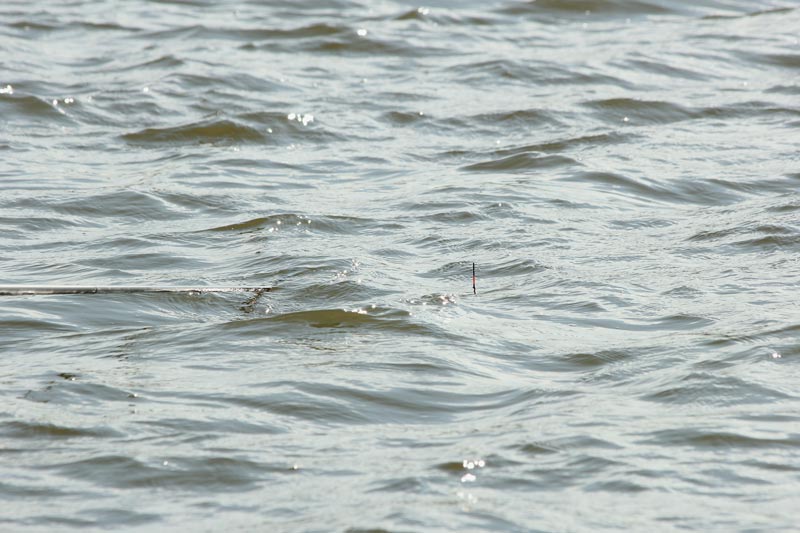
A lot of Swinno's bites are left bites.
What would be your typical target?
You can expect silver-fish weights of 40lb or more on these waters, so they can play a massive part even if carp are also required to make the frame. To catch the bigger weights you’ll usually need bream and skimmers. These are the main weight builders. However, you could easily catch 20lb-plus of roach here on Lambsdown, so they cannot be ignored either. Bonus tench, hybrids and big perch are also on the cards, but I always treat these as a bonus as you cannot target them specifically.
How many swims would you typically plumb up?
I think one or two pole swims are ample on big waters like this. That could be one short and one long, or one left and one right at 10 o’clock and 2 o’clock angles. It all depends on the conditions – and don’t forget the wind normally picks up later in the day, so you always need to try and anticipate what’s going to happen later on.
Some days, just like today, conditions are less than favourable and that’s when I will concentrate all my efforts down one hole. I would rather do that and work one swim than spread things all over the place and never be quite sure where I should be fishing.
We’ve noticed the bottom is sloping today. What advice have you got for swims like this?
Here at Meadowlands, you’ll struggle to find a flat bottom to fish. More often it will deepen up anything from eight inches to a foot every pole joint you add. I, therefore, plumb up really accurately, right at the end of my pole so that I know the exact depth my rig is at. I then also plumb up a section further and a section closer to cover myself.
On sloping venues like this, I think it’s really important to feed around 18 inches short of the float. I don’t honestly know if the feed does roll down the slope but it gives you peace of mind that you’re fishing in the right spot to get bites. Around 13 metres is a comfortable catching range and should still be about fishable if the wind gets up. Conditions are rarely favourable enough to be going as far as 16 metres.
It’s towing a lot today, so do you hold the rig steady or let it go with the flow?
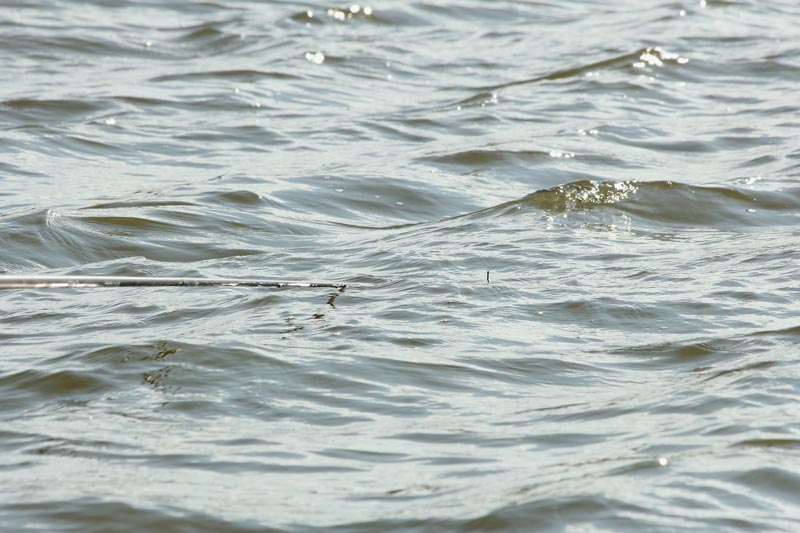
Dipping the pole tip helps keep the rig steady.
There are days when holding the rig dead still on a spraybar works well, but I’d much rather try and search the length of the swim first before deciding that’s the right way to go. I always like to use any tow to my advantage and search the swim. By that, I mean trying to the left and the right of your feed as well as above and below it.
It can be deceiving as some days the wind and tow will be going in completely opposite directions and you’ll get more bites to one side of the feed. Sometimes that is the opposite side to what you expected.
It’s also common to find two very distinct catching areas; one directly where you’ve fed and one as much as six feet or more downstream, even though all your feed is going down the same hole. I think when the lake really tows the fish line up as if you were fishing a river. That’s a useful point to bear in mind, as you can often pick off fish from the main feed area but also nick an occasional one or two much further down the peg.
What about rigs?
Simple, tangle-free rigs are vital for deep water. I use slim G-Tip 2 floats when the fishing is calm and rounder-bodied and thicker-bristled G-Tip 3s when conditions are rougher. Today I have a 1g G-Tip 2 and a 1.5g G-Tip 3 set up to cover both extremes. These are shotted very simply with olivettes around two feet from the hook and three No9 droppers spread below. Main line is 0.12mm to a 6in 0.08mm Drennan Rig Line hooklength. I’ll step this up to 0.10mm if the fish are feeding freely.
For the hook, I’m a massive fan of Drennan Silverfish Maggots as the points are so long and fish don’t seem to come off them. A size 18 is ideal most of the time, as you can easily bury a caster inside or fish double maggot. If I’m fishing worm heads I like a size 16 and I’ll drop to a 20 on really hard days with single maggot.
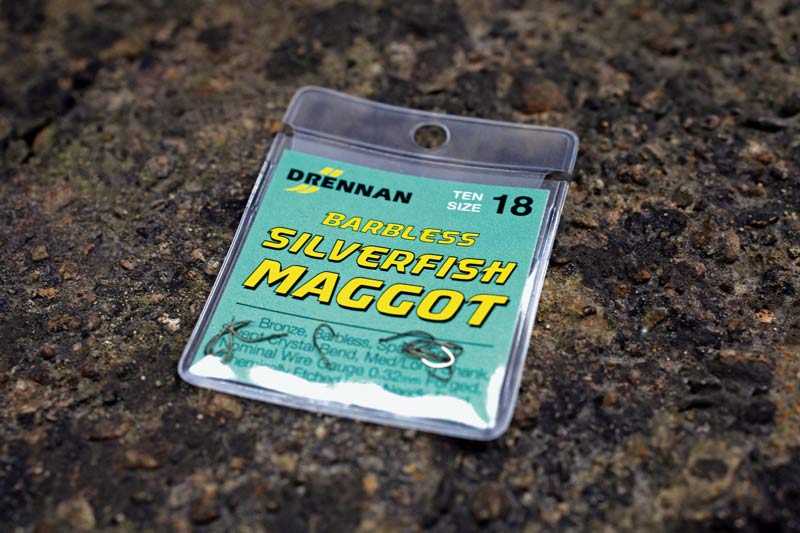
Wayne's a big fan of these hooks for... silver fish!
Can you tell us what you plan to feed and why?
My tried-and-trusted groundbait is a 50/50 mix of Bait-Tech Super G Green and Pro Natural Dark. I sieve this before mixing, however, to remove the bigger seeds and bits as you don’t want dry particles drawing fish off the bottom. I also mix it quite wet so that it goes straight down. I might include up to a third of the mix as damp leam, too. Skimmers seem to really like leam, plus it adds weight and reduces the overall feed content.
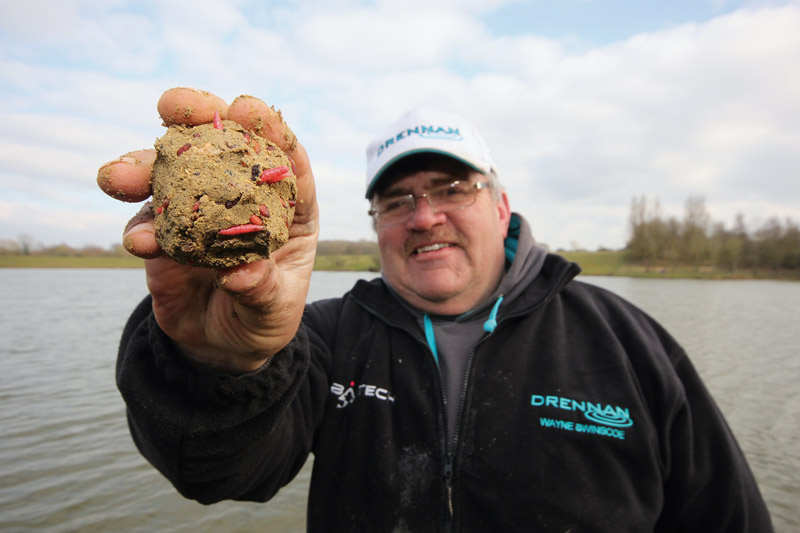
Wayne cups in around half-a-dozen of these and wants them to go straight down!
I will cup in four to six balls at the start, around 18 inches closer in. These will usually include a generous amount of maggots and casters.
Would you use pellets as well?
I think maggots and casters are the most reliable baits to feed, but the warmer it gets the more likely pellets are to play a part, so I will always have some with me. If it’s out and out skimmers then loose feeding 4mms and fishing a big 6mm expander on the hook can work particularly well. However, it’s very difficult to present pellets so well on a windy day like today.
You will also miss out on any quality roach and perch that are swimming about. Half my weight today has been made up of stamp roach so they should never be ignored on days like this.
What about other baits such as worms and pinkies?
Worms are very much the same as pellets and best included on warmer days. You don’t need loads – a quarter to a third of a kilo at the most. I like to chop them up fine and also make sure they are really clean before chopping as I don’t want any peat at all mixed in with my worms when I’m bottom fishing. I’ve added a pinch of worms to my feed at the start and tried worm on the hook but maggots and casters have definitely been better today.
Pinkies can have their day, particularly in the depths of winter, but I’d much rather be more positive and feed casters and maggots instead.
Do you prefer live or dead maggots?
It’s fashionable to use dead maggots these days but more and more I find I catch better using live maggots on the hook. Skimmers seem to respond really well to one or two live maggots, but I’ll bring both and experiment.
Will you try fishing off the bottom at all?
I generally fish anything up to four inches overdepth with this style of fishing. The windier it is the better for catching on the deck. You’ll probably find that it’s easier to catch a few inches off the bottom on shallower venues as you’ll be using lighter rigs so the fish will feel much less resistance. Trying to do that in 10 feet or more of water with heavier rigs is much less effective.
However, catching really shallow can often still be an option, particularly on warm and sunny days. When skimmers are the main target, however, I generally prefer to keep them on the bottom where they are much easier to catch.
Do you loose feed as well?
I like to pot in several balls of groundbait at the start and then regularly top up when bites dictate. That will typically be another small ball every 30 minutes or so packed with feed. I also think loose feeding is very important and bring two or three pints of casters. You don’t want to get carried away with loose feeding, however, as the fish can come off the bottom and cause missed bites and foul hookers.
To overcome this I’ll feed a couple of larger pouches more sporadically. If it’s an out-and-out bagging-up day for skimmers then I might cut out the loose feed entirely and just pot in groundbait. It’s all about reading the swim and working out what’s best on the day.
Is there a set pattern on matches like this?
Quite often you will catch roach and perch early and then a few skimmers will move in midway through before a few bigger skimmers turn up in the last hour. However, that’s not always the case. Sometimes you can catch good skimmers from the off and then they peter out. In an ideal world, the fishing will get progressively better and better the longer you fish as more feed goes in and more and more fish find it.
What do you do if it goes quiet?
This happens a lot on this kind of water. Sometimes the fish will just drift off. Sometimes it means a predator is in the peg. Sometimes better bream will push out the roach completely. Sometimes it’s because a carp has turned up. There is not a lot you can do when this happens other than search the perimeter of your peg to try and keep eking out a few fish.
Another reason for a swim going quiet that I’m sure many people don’t fully appreciate is that you haven’t fed enough bait. You’re rarely more than 20 yards away from a fish on a decent commercial, but you’ve got to keep topping up to make the most of it. They’ll soon clear you out and drift off if you let them.
You’ve also set a quivertip rod up. Why’s that?
On really gusty days like today you’ll often have no option other than to chuck a bomb over the top of your pole swim. To do this I like to be really accurate, so before the start I’ll put my rod on the rest, attach a 1oz lead, pop it in my pole pot, open my bail arm and ship out to the exact distance I’m fishing. I then drop it into the swim and clip up. I then also mark the line next to the line clip with a permanent marker. This now means I can try a yard further out or closer in and still know exactly where I’m fishing.
My setup is very simple and consists of a 3/8oz bomb fished on a paternoster, 4lb main line to a 2ft to 2½ft hooklength of 0.12mm Rig Line and a size 18 Silverfish Maggot. The rod is an 11ft 6in Matchpro Combo with a light ¾oz or 1oz tip.
Double maggot is a great hook bait on this setup, but don’t ignore double caster either as that’s actually produced my two biggest bream today. You could use a small feeder instead of a bomb but I think this completely alters the way you’ve been feeding, so I’d rather continue to top up with larger balls via the pole and loose feed casters over the top as normal. It’s a useful trick to have on standby and bought me an extra 8lb to 10lb of fish today.
Like what you see?
Or buy a single issue
- Log in or register to post comments


